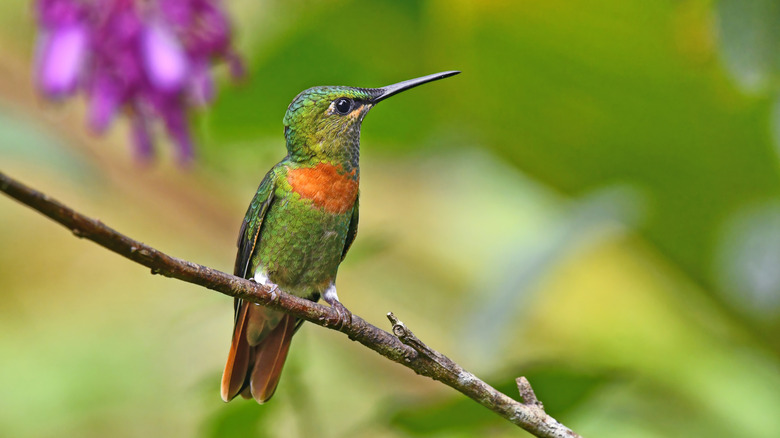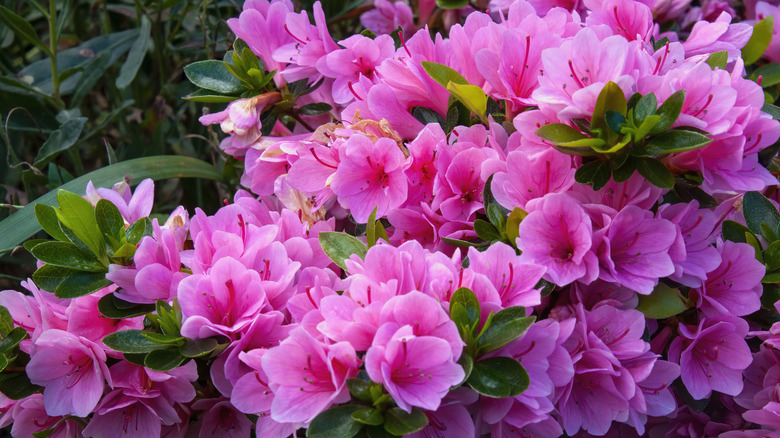The Flowering Bush That Will Make A Great Hummingbird Magnet
Out of all the birds that stop by the garden, hummingbirds are easily the ones everyone falls for. So, it is no surprise that a lot of gardeners want them around and are always trying to add more features for attracting hummingbirds to the garden. One of such features is nectar-rich flowering plants that offer a ton of food for these tiny yet always hungry little birds — and they need all the food they can find. Why? Because hummingbirds have a tremendously high metabolism. They must continuously feed, literally every 10 or 15 minutes, or they could starve within a few hours. That is where a flowering azalea bush (Rhododendron spp.) can help.
The secret to attracting hummingbirds to your garden is to grow plants they seek. Azaleas offer exactly what hummingbirds search for — abundant nectar. But so do a lot of other flowers, so what is so special about azaleas? Well, the tubular shape of azalea flowers keeps the nectar beyond the grasp of most creatures but favors hummingbirds with their long, needle-like beaks. And if you know anything about hummingbirds, they don't like competition and will even fight for good nectar resources.
Also, azaleas are not hard to grow, and if you carefully select the species, you can have them flowering up to eight months of the year or several times a year. Hummingbirds are attracted to color and rely on their sight to find food resources. They are especially attracted to red, orange, and pink flowers. Azaleas come in all of these colors as well as white, soft pink, yellowish pink, bright red, orangey-red, and even purple.
Tips for growing azaleas
If you want your azaleas to bloom abundantly to keep hummingbirds coming to your yard, you have to give them the right conditions. Most azaleas grow well in USDA Hardiness Zones 5 through 8, though you'll need to check for your chosen species. They typically do best with partial shade. A few varieties tolerate direct sun, but for most, you should plant them beneath woodland canopies or beside the house's northern wall.
Azaleas need about 1 inch of water every week. When it comes to soil, they like it a bit acidic — somewhere around a pH of 4.6 to 6.0. The soil also needs to be moist but still well-drained and, ideally, high in organic matter. If your soil doesn't drain well, you can plant azaleas in raised beds, and if it is low in nutrients or organic matter, you can turn to fertilizers or other organic soil amendments.
Keep your hand light on the use of pesticides (and follow all label directions carefully) if your aim is to attract hummingbirds to your garden because the little birds also eat insects they can easily capture and swallow. Pesticides may kill these bugs, making your garden less appealing by reducing their food supply, not to mention the potential harm ingesting the chemicals could do.

